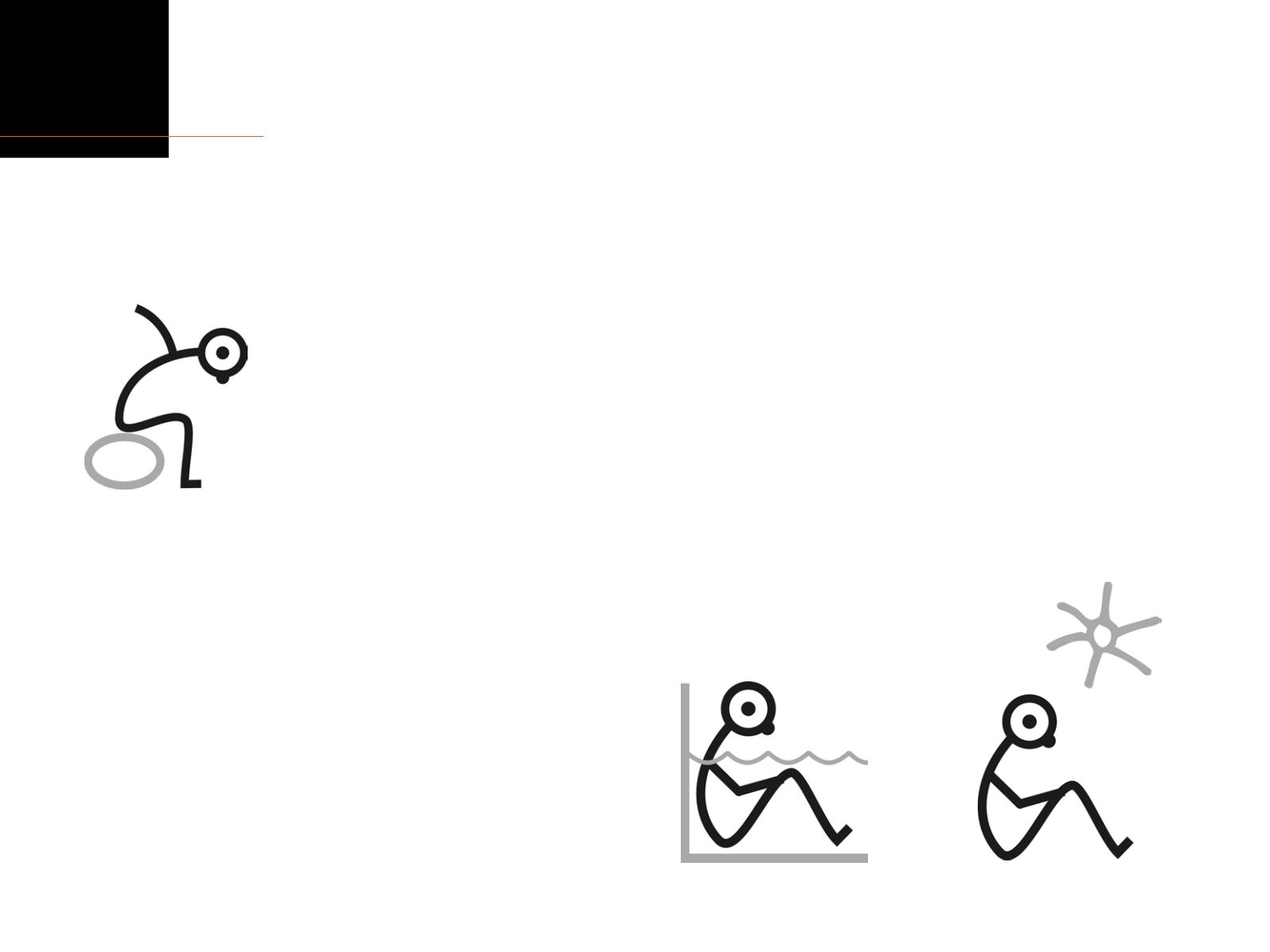
explain
pain
section
6
page
122
Accessing the virtual body
(continued)
3. Add varying balance challenges
The forward bendingmovements could be
performed sitting on a fitness ball and bending
forwards, rolling the ball under you as you bend.
A further progressionwould be to bend forwards
with your arms up to the ceiling or pointing down
to the ground andmoving your legs to one side
and then the other. These inputs will also provide
some virtual body changes via distraction.
4. Vary visual inputs
Performing amovement with your eyes closed
usuallymeans a greater challenge for the virtual
body. If you can perform amovement, say bending
forwards from the waist on a chair without
igniting a pain neurotag, try to look at your body
while you are doing it, so perhaps do it in front of
or side-on to amirror. The visual input to the
brain reinforces themessage that amovement,
which the brain ‘knows’ to be painful, doesn’t
have to be.
5. Alter the environment of activities
You could perform forward bendingmovements in
the comfort and security of your home, or be
adventurous and do them in the park like the Tai
Chi groups, or even at work or where the injury
happened. Performingmovements inwater allows
environmental inputs from variations in balance,
temperature, smells, other people around and
wearing different clothing. You can stand in a pool
up to your chin inwater, lift one knee up and pull
the knee towards your chest. This will bend your
back a little, but the virtual back bending in your
brainwill be very different to the one you ignite
when you bend your back in the therapist or
doctor’s office.


